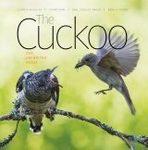Field / Identification Guide
By: Sarah Bowen(Author), Claire Goodwin(Author), David Kipling(Author), Bernard E Picton(Author)
200 pages, colour photos, colour illustrations, colour distribution maps
![Sea Squirts and Sponges of Britain and Ireland Sea Squirts and Sponges of Britain and Ireland]()
Click to have a closer look
About this book
Customer reviews
Related titles
About this book
Sea squirts and sponges are found in most seafloor habitats around the coasts of Britain and Ireland. Despite being the dominant life forms in many areas, these two groups of under-recorded marine animals are often confused with one another, and most divers and snorkellers can recognise and name very few species. In fact, around 500 species of Ascidiacea (sea squirts) and Porifera (sponges) have been described so far in British and Irish seas, corresponding to over 4% of the world's total.
Sea Squirts and Sponges of Britain and Ireland is recommended reading for anyone who wants to identify and discover more about these fascinating and diverse animals. Rather than relying on the characteristics of preserved specimens, this guide uses marine photography and detailed underwater observations to concentrate on in situ features, allowing you to record species without collecting them. Most sea squirts found in Britain and Ireland's shallow waters are included, together with the most easily recognised sponges. Whether you are a student, a diver, a rockpooler or simply an enthusiast, this is an essential companion.
- Over 115 species described in detail, with in situ photographs to help with underwater recognition
- Information on size, depth, habitat and distribution
- Key distinguishing features and areas of confusion in identification highlighted
- Details of body structure, life histories, digestive and reproductive processes
- Information about predators, interactions between species, non-native and problem invasive species
Customer Reviews
Field / Identification Guide
By: Sarah Bowen(Author), Claire Goodwin(Author), David Kipling(Author), Bernard E Picton(Author)
200 pages, colour photos, colour illustrations, colour distribution maps
"This admirably illustrated handbook is an addition to the growing library of Seasearch field guides to the marine life of Britain and Ireland. One reason for bringing together sea squirts and sponges – two phyla from opposite extremes of the evolutionary spectrum – in one volume is the difficulty that non-specialists may experience when attempting to separate the two groups. The emphasis is on field identification based on external characters; readers will not find the classical descriptions, which traditionally include detailed dissections of internal anatomy for sea squirts, and thin sections and spicule drawings for sponges. Excellent field photographs show the animals in their natural habitats, with the details referred to in the text clearly visible in the accompanying images. This approach necessarily has limitations [...] At present, neither group is widely recorded by non-experts and often there are few details available on distribution, as reflected by the lack of maps for sea squirts. Many taxa of both groups are under-recorded by divers and by those who explore the intertidal zone too, so this guide should help to encourage the greater reporting of sea squirts and sponges. The book has certainly helped me to solve a few conundrums during my Seasearch recording in Dorset."
– Lin Baldock, British Wildlife 30(3), February 2019





































